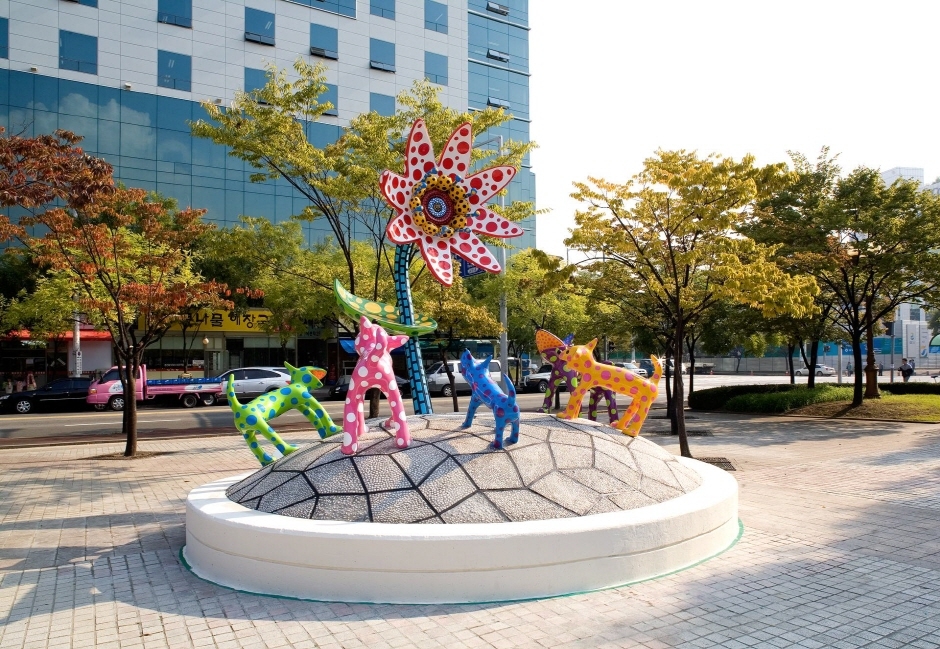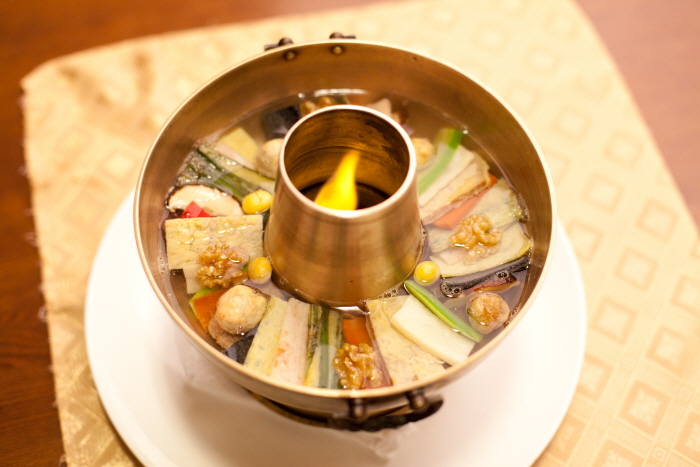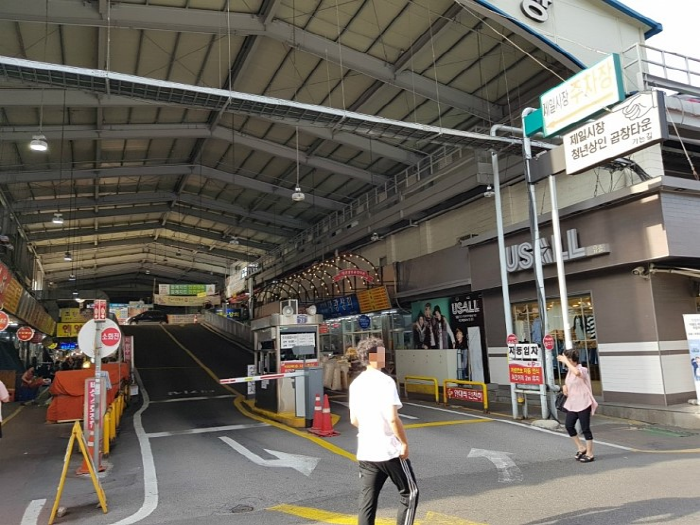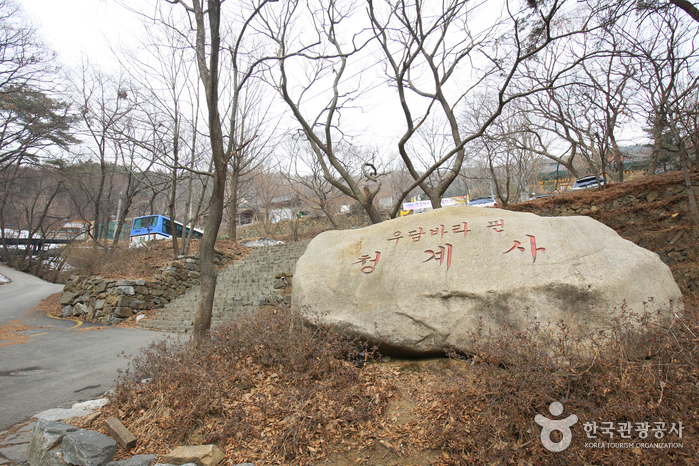Himart - Yeokgok Branch [Tax Refund Shop] (하이마트 역곡점)
18.7Km 2024-04-22
535, Gyeongin-ro, Bucheon-si, Gyeonggi-do
-
Artbox - Uijeongbu Branch [Tax Refund Shop] (아트박스 의정부)
18.7Km 2024-04-22
5, Haengbok-ro, Uijeongbu-si, Gyeonggi-do
-
Anyang Art Park (안양예술공원)
18.7Km 2024-10-24
7 Yesulgongwon-ro 131beon-gil, Manan-gu, Anyang-si, Gyeonggi-do
+82-31-8045-7000
Anyang Art Park, formerly known as Anyang Recreational Park, is an easily accessible, well-maintained cultural space. It has been revitalized with updated features such as artificial waterfalls, an outdoor stage, a plaza, walking paths, and enhanced lighting facilities. The park promotes art projects by displaying 50 artworks from renowned Korean and international artists throughout various locations. Nearby, visitors can explore additional local attractions including hiking trails through dense forests, traditional temples such as Anyangsa Temple and Yeomburam Hermitage, the treasure-designated Flagpole Supports at Jungchosa Temple Site, and the Kimchungup Architecture Museum, all of which contribute to a rich area experience.
Anyang Public Art Project (안양공공예술프로젝트)
18.7Km 2023-08-17
Anyang-dong, Anyang-si, Gyeonggi-do
+82-31-687-0548
Anyang Public Art Project (APAP) is Korea's only public art festival that takes place once every three years. APAP takes inspiration from Anyang's geography, culture, and history to create, build, exhibit, and perform a wide range of art such as paintings, sculptures, architecture, media work, and more, turning the city into a giant gallery open to the public. 2023 marks the 7th APAP festival, and the event will be organized around the theme of Zone 7, an imaginary space for a closer look into the world of imagination and public art.
Silbi Sikdang (실비식당)
18.7Km 2025-01-22
12 Hoguk-ro 1123beon-gil, Uijeongbu-si, Gyeonggi-do
Opened in 1965, Silbi Sikdang uses its unique sauce to create special budaejjigae (Sausage Jjigae) and budaebokkeum.
Homeplus - Bucheon Sosa Branch [Tax Refund Shop] (홈플러스 부천소사)
18.7Km 2024-04-22
532, Gyeongin-ro, Bucheon-si, Gyeonggi-do
-
Olive Young - Uijeongbu Jungang-ro Branch [Tax Refund Shop] (올리브영 의정부중앙로)
18.7Km 2024-04-17
12, Haengbok-ro, Uijeongbu-si, Gyeonggi-do
-
Hanchaedang (한채당)
18.8Km 2021-06-18
38, Misadong-ro, Hanam-si, Gyeonggi-do
+82-31-792-8880
Hanchaedang aims to serve the very best in traditional and royal Korean food both beautiful and faithful to Korean's heritage. Set amidst the beauty of nature and hanok housing, Hanchaedang works hard to provide healthy food that carries over the taste of traditional Korean food.
Uijeongbu Jeil Market (의정부 제일시장)
18.8Km 2023-10-26
43-2, Simin-ro 121beon-gil, Uijeongbu-si, Gyeonggi-do
This is the largest traditional market in Uijeongbu and one of the largest in northern Gyeonggi-do. It offers a large collection of goods for sale, so it is beloved by Uijeongbu locals and people from the surrounding areas. Because of its size, the market has multiple entrances that lead to the four zones of Ga, Na, Da, and Ra. Its large size and prominence also mean the market is organized and hygienic. The market is quite famous for its Fried Chicken Street, which serves whole chicken fried to order. A less famous but no less delicious secret is the “food department store” on the first underground floor. This is a massive collection of restaurants and food carts serving a great variety of meals. When one steps into the “department store,” one feels as if one is truly among the locals in their favorite hangout, with middle-aged diners gathering for a meal or some drinks with their friends. Note that for some dishes like seafood, there is no fixed price. The market price is used instead. But no matter what stall one visits, the stalls tend to be quite generous with their food, so if you are interested in some local gourmand experience, make sure to visit.
Gyeonggi Cheonggyesa Temple (청계사(경기))
18.8Km 2021-11-23
475, Cheonggye-ro, Uiwang-si, Gyeonggi-do
+82-31-345-2533
Cheonggyesa Temple is a Buddhist temple near Baegunhosu Lake that became well-known as the site of udumbara flower, a rarity that blooms on Buddhist statues. Built during the Silla Kingdom, the temple offers many sights, including the Cheonggyesa Temple Monument, Geungnakjeon Hall, the bell tower, Samseonggak Shrine, Ksitigarbha Hall, and Gamnoji Pond. Among the many things to see, visitors should not miss a glimpse of the Bronze Bell of Cheonggyesa Temple and the Wood Printing Block in Cheonggyesa Temple. Created in the 27th year of the reign of King Sukjong (1701) of the Joseon dynasty, the Bronze Bell has been designated as a national treasure, and is adorned with elaborate patterns.
![Himart - Yeokgok Branch [Tax Refund Shop] (하이마트 역곡점)](http://tong.visitkorea.or.kr/cms/resource/82/2889982_image2_1.jpg)
![Artbox - Uijeongbu Branch [Tax Refund Shop] (아트박스 의정부)](http://tong.visitkorea.or.kr/cms/resource/93/2881293_image2_1.jpg)


![Homeplus - Bucheon Sosa Branch [Tax Refund Shop] (홈플러스 부천소사)](http://tong.visitkorea.or.kr/cms/resource/88/2888388_image2_1.jpg)
![Olive Young - Uijeongbu Jungang-ro Branch [Tax Refund Shop] (올리브영 의정부중앙로)](http://tong.visitkorea.or.kr/cms/resource/92/2881292_image2_1.jpg)



 English
English
 한국어
한국어 日本語
日本語 中文(简体)
中文(简体) Deutsch
Deutsch Français
Français Español
Español Русский
Русский